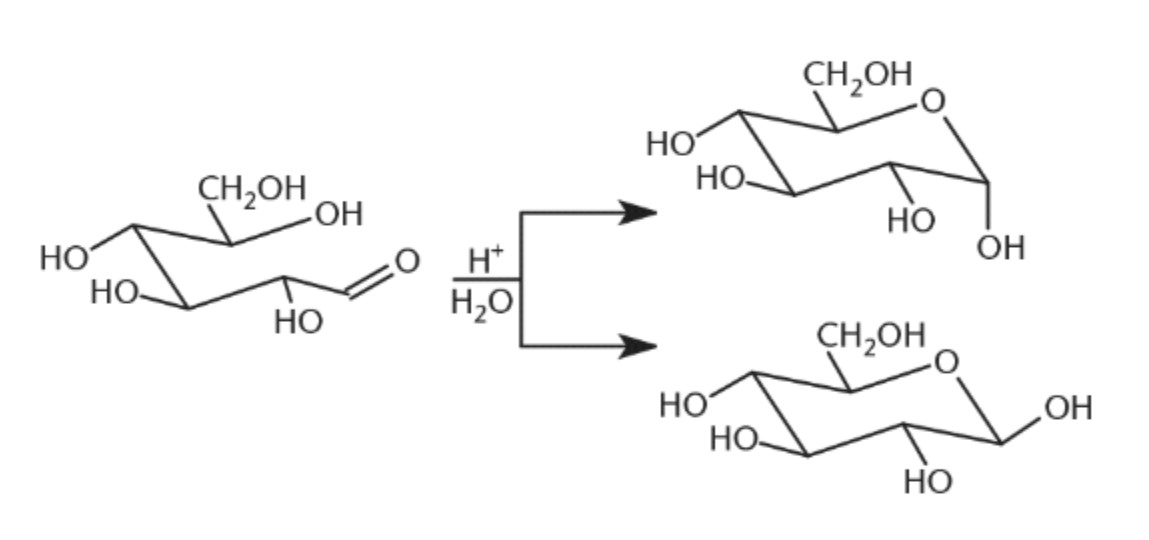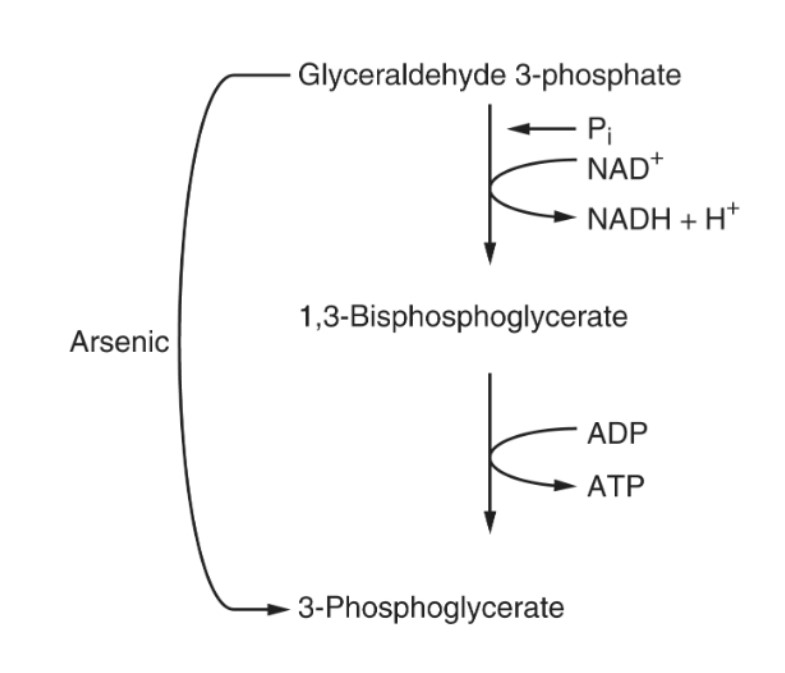Biochemistry is one of the numerous science subjects you must master to ace the MCAT. It is one of the most challenging subjects to study for the MCAT. You need to learn and memorize many concepts, terms, and equations.
Additionally, unnecessary worry and anxiety on test day may make you forget what you have been studying.
We do not want the time and effort you put into preparing and studying for the MCAT to be in vain. So, in this article, we will go over the best methods and approaches for going over your MCAT biochemistry section answers.
If you are interested, please keep reading.
What is MCAT Biochemistry?
Biological chemistry, or biochemistry, studies chemical processes that occur within and relate to living things.
Structural biology, enzymology, and metabolism are all included in this branch of biochemistry. Biochemistry improved its ability to describe life processes in the final two decades of the 20th century through these three fields.
The primary objective of studying biochemistry is to comprehend the chemical principles that allow biological components to produce reactions within and between living cells. Understanding tissues, organs, and the structure and operation of organisms require this understanding.
It is one of the subjects evaluated on the MCAT because of its significance in medicine.
Two MCAT sections that cover biochemistry are Chemical and Physical Foundations of Biological Systems and Biological and Biochemical Foundations of Living Systems.
To pass the 25% of the MCAT's chemistry/physics part, you must have the knowledge and skills in biochemistry. There are 59 questions in this section overall, and 15 of them are on biochemistry.
Furthermore, 25% of the bio/biochem-related component of the MCAT is devoted to biochemistry. It means that 15 of the 59 questions in this section pertain to biochemistry.
Summary Table of Biochemistry Distribution in the MCAT
MCAT Section | Chemistry Subject | Percentage | Number of Questions (out of 59) |
|---|---|---|---|
Chemical and Physical Foundations of Biological Systems | First-Semester Biochemistry | 25% | 15 |
Biological and Biochemical Foundations of Living Systems | First-Semester Biochemistry | 25% | 15 |
Total Number of MCAT Biochemistry Questions: 30 | |||
Biochemistry Topics to Study for the MCAT
Biochemistry covers a vast range of concepts. You will have plenty of time to spare if you are familiar with the biochemistry concepts covered on the MCAT.
Pay close attention to these ideas as you study and memorize them to increase your chances of obtaining the MCAT score.
Following are the many MCAT biochemistry subjects for your reference:
How to Review for the MCAT Biochemistry: 6 Useful and Proven Tips
It could be nerve-wracking to take the MCAT. Success is not a given, no matter how thoroughly you plan and study for this crucial exam.
Even though it might seem complicated, it is far more straightforward than you imagine. You can accurately respond to the questions if you comprehend the various approaches and strategies.
We are here to support you on your MCAT journey, and listed below are some of the most excellent and effective tactics you may use while you go over your MCAT biochemistry answers.
Understand the Questions by Reading the Questions
Before answering the questions, read the complete instructions to prevent any procedural mistakes. If you feel nervous, this is the time to calm down and gather your thoughts.
Identifying the inquiry's keywords and the information it seeks will help you comprehend it. In addition to indicating whether the question is direct or application-based, the precise subject being tested by it must be stated.
You can learn formulas and strategies to use by selecting the topic. Make a diagram if you find the solution to the question too technical.
Example:
Which of the following claims about nonpolar R groups in aqueous solution is most likely accurate?
A. They hide inside proteins and are hydrophilic.
B. They are hidden within proteins and are hydrophobic.
C. They reside on protein surfaces and are hydrophilic.
D. They are present on protein surfaces and are hydrophobic.
Explanation:
Note that the question asks which of the given statements is correct. This means that three out of the four statements are wrong. You have to analyze the options very carefully.
Nonpolar molecules are hydrophobic, not hydrophilic. Thus, options (A) and (C) are inaccurate; choice (D) is incorrect since they are not typically found on protein surfaces.
Nonpolar groups are hydrophobic because they cannot create dipoles or hydrogen bonds. Proteins with hydrophobic R groups can avoid interacting with polar water by burying them there.
This makes option (B) - They are hidden within proteins and hydrophobic, the correct answer.
If You Cannot Figure Out the Answer, Guess
You may encounter difficulties when only two or three contested choices are available after examining the MCQ (multiple-choice) answers. When this occurs, make the most of your guessing ability to save time.
Make every attempt to limit speculation as little as possible, but keep in mind that it depends on chance. Remember that your first response was probably accurate as you progress and maintain it.
Example:
Substrate C functions as an allosteric inhibitor of enzyme 1 in the following equation. Which of the following mechanisms must result from substrate C?

A. Competitive inhibition
B. Irreversible inhibition
C. Feedback enhancement
D. Negative feedback
Explanation:
Negative feedback is defined as the slowing of the rest of the pathway by restricting the activity of enzyme 1.
Option (A) is wrong since allosteric interactions do not compete for the active site. This is an example of an allosterically inhibited enzyme, even though many products do competitively inhibit an enzyme in the route that gives rise to them.
Option (B) is incorrect since we are not informed whether the inhibition is reversible; hence there is insufficient information to support it.
Allosteric interactions often only last a short time. Choice (C) is incorrect because it is what happens when enzyme one activity is decreased, not the opposite.
Therefore, the correct answer is option D – Negative feedback.
Follow the Step-by-Step Procedure When Solving Equations
Whenever you run into an equation in MCAT biochemistry, use the word problem solution steps. This suggests that you must first ascertain what the question is.
The next step is to identify the equation that must be employed in conjunction with the given facts for you to reach the correct conclusion.
This is a very organized and practical approach for any calculation-intensive MCAT questions, not just those including biochemistry.
Remember that for this approach to function effectively, every detail must be accurate; otherwise, you will get the wrong result.
Example:
Consider an enzyme A-catalyzed reaction with a Km value of 5 X 10-6 M and a vmax of 20 mmol/min.
The reaction will proceed at the following rate with a substrate concentration of 5 10-6 M:
A. 10 mmol/min
B. 20 mmol/min
C. 30 mmol/min
D. 40 mmol/min
Explanation:
You need to identify first what the question is asking. In this case, the question is asking for a reaction.
Then, you need to identify the equation necessary to solve what is being asked.
Enzyme A operates at half of its vmax at a concentration of 5 10-6 M because the concentration equals the enzyme's Km.
Consequently, it should be half of what is given, which is option (A) - 10 mmol/min.
If you are struggling to remember what equation to use, look at the units given and the units in the solutions, as they can help guide you.
Use the Elimination Method
After reading the question, we suggest finding the passage section pertaining to the specific problem. If you require more details to fully respond to the query, reread that section.
Start by crossing off an option when you are convinced it is incorrect. Following that, you should be able to eliminate the alternatives and select the ideal one.
Example:
When glucose is arranged in a straight chain, it:
A. is an aldoketose
B. is a pentose
C. has five chiral carbons
D. is one of a group of 16 stereoisomers
Explanation:
Since glucose has six carbons and one aldehyde group, it is an aldohexose. This knowledge can rule out options (A) and (B).
Each nonterminal carbon in aldose sugars is chiral.
Consequently, glucose contains four chiral centers rather than five as stated in option (C). A chiral molecule can have a maximum of 2n stereoisomers, where n is the number of chiral carbons. Four chiral centers in glucose result in 24 = 16 different stereoisomers.
Therefore, the correct answer is D - is one of a group of 16 stereoisomers.
Review and Evaluate Each Response
This means examining the criteria for each response to obviate probable results. By eliminating any irrelevant comments, you can eventually narrow the selections down to just one choice.
As you go along, refer back to the original query regularly to ensure you're only removing irrelevant responses.
Example:
What step is demonstrated by the following reaction:

A. aldehyde formation
B. hemiketal formation
C. mutarotation
D. glycosidic bond cleavage
Explanation:
The hemiacetal ring of glucose will spontaneously split open in solution and reform. Bond rotation between C-1 and C-2 occurs when the ring is shattered, resulting in either the α- or β-anomer. The answer to this question's reaction illustrates how glucose rotates.
Option (A) is incorrect since the reactant, not the result, is an aldehyde.
Because a hemiketal has a -OH group, a -OR group, and two -R groups, option (B) is wrong.
Additionally, aldehydes are our first reactant, and ketones are the source of hemiketals.
Finally, because the initial reactant lacks a glycosidic link, option (D) is incorrect too.
This means that the correct answer is C – mutarotation.
Pay Attention to the Diagrams
Reaction diagrams alone may typically be used to answer nearly all biochemistry questions on the MCAT.
To get right to the questions, try skipping the text. You might be shocked to discover that you can save a ton of time and yet provide accurate answers to the questions.
Make sure you comprehend the skills tested as you concentrate on the diagrams.
Remember that the MCAT emphasizes applying the knowledge you acquired over your study session.
Example:
The effects of arsenic on glyceraldehyde 3-phosphate metabolism are depicted in the diagram below. As a result, how many molecules of ATP would be produced immediately when two glucose molecules were converted to four pyruvate molecules in the presence of arsenic?

A. 0
B. 1
C. 2
D. 4
Explanation:
Glycolysis produces 2 ATP for every glucose consumed. The answer states that arsenic makes 3-phosphoglycerate directly by avoiding 3-phosphoglycerate kinase and glyceraldehyde-3-phosphate dehydrogenase.
One of the two processes in the phosphorylation of the substrates, 3-phosphoglycerate kinase, often results in the production of 2 ATP (one for each of the two molecules of glyceraldehyde 3-phosphate formed from glucose).
The net yield of glycolysis is now 0 ATP if these two ATP molecules are lost.
Therefore, the correct answer is A – 0.
How Much Time Should You Give Yourself to Study for the MCAT Biochemistry?
It is a crucial issue that demands attention since, if you do not allow enough time for planning and studying, you might have to repeat the process repeatedly for years.
Successful students frequently prepare for the MCAT for three to six months, working six hours daily. However, depending on where you start, it might only take half as long (or twice as long).
Chemistry and physics make up the majority of the MCAT. Chemistry knowledge is notably needed for 63 MCAT questions. Thirty (30) of the 63 questions on the MCAT deal with biochemistry.
It should be clear that you must work very hard to prepare for the MCAT's biochemistry section. The answers to these 30 questions can influence whether you can enroll in medical school.
Over three to six months, you should devote six hours to MCAT prep. The most effective MCAT study plan would advise concentrating on three daily subjects.
You should devote two hours a day to each subject — in this case, MCAT chemistry.
The choice of how to divide these two hours so that you can study general and organic chemistry, as well as biochemistry, is entirely up to you.
Be willing to spend extra time learning about topics and disciplines you find challenging, whether general chemistry, organic chemistry, or biochemistry.
Your duties at work or school may occasionally force you to change your plans. But keep in mind to set aside one day each week for leisure. When you take the MCAT, you don't want to be overworked and exhausted.
Additional FAQs – How to Review the Biochemistry Section in the MCAT
How Do I Study for MCAT Biochem?
You must first have a thorough understanding of the various amino acids, including their structure and characteristics.
Additionally, you should be well-versed in metabolism and the many procedures used to break down various substances.
Furthermore, studying with MCAT flashcards and following the many methods listed above will help you raise your MCAT biochemistry score.
Can I Self-Study Biochemistry for the MCAT?
You can use MCAT prep books and take free MCAT prep courses while preparing for the MCAT. You can also utilize the online MCAT practice questions, flashcards, and practice exams.
Additionally, you can subscribe to free MCAT YouTube channels and listen to podcasts dedicated to the MCAT.
Finally, do not forget to track your progress by answering practice exams. This helps you identify your strong and weak areas.
Is There a Lot of Biochemistry on the MCAT?
In the MCAT's chemistry and physics section, there are 15 biochemistry questions.
The MCAT's bio/biochemistry part includes 15 questions in biochemistry as well.


 To help you achieve your goal MCAT score, we take turns hosting these
To help you achieve your goal MCAT score, we take turns hosting these 



















